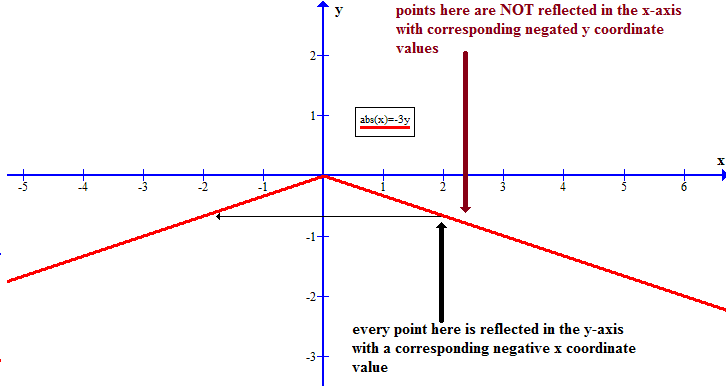How do you determine whether the graph of #absx=-3y# is symmetric with respect to the x axis, y axis or neither?
1 Answer
Symmetric to y-axis;
Not symmetric to x-axis
Explanation:
If a relationship is symmetric to the y-axis then every point
That is if a relationship is symmetric to the y-axis, we can replace all occurrences of
Given the relationship:
since
and the relationship is symmetric to the y-axis
~~~~~~~~~~~~~~~~~~~~~~~~~~~~~~~~~~~~~~~~~~~~~~~~~~~~~~
Similarly, if a a relationship is symmetric to the x-axis, we can replace all occurrences of
Given the relationship:
we note that
so the relationship is not symmetric to the x-axis.
~~~~~~~~~~~~~~~~~~~~~~~~~~~~~~~~~~~~~~~~~~~~~~~~~~~~~~

